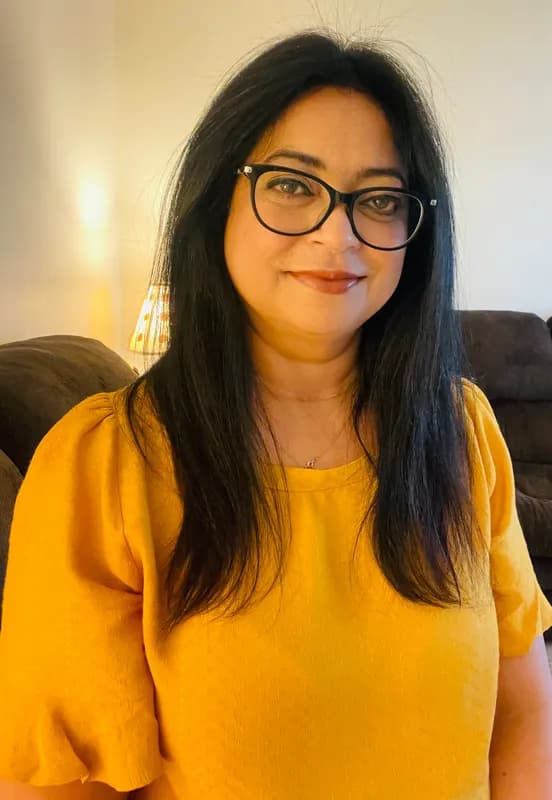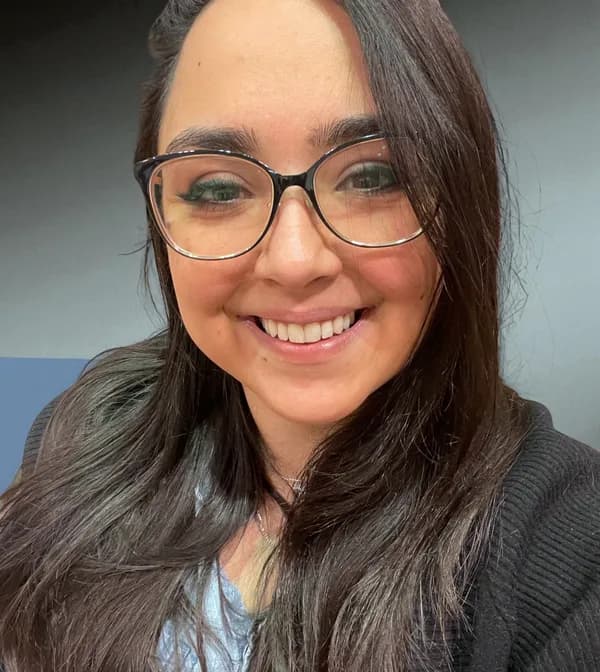Therapy for Neurodivergence

Your brain works differently, even if you never had the words for it. Maybe you can focus for hours on what interests you but struggle to start simple tasks. Sensory input might overwhelm you while others barely notice it. Social situations can feel like a language you were never taught. You have spent years trying to fit into systems built for neurotypical people, masking your differences and feeling exhausted. Whether you are autistic, have ADHD or dyslexia, or simply see yourself in these experiences, therapy for neurodivergence is not about changing who you are. It helps you understand your mind, build strategies that match your neurology, and live with less shame and more authenticity.
Understanding neurodivergence in Canada
Neurodivergence represents natural human variation
Neurodivergence refers to natural differences in how brains develop and function, including autism, ADHD, dyslexia, dyspraxia, dyscalculia, and Tourette syndrome. The neurodiversity perspective views these not as defects but as part of normal human variation. Research suggests that 15 to 20% of people are neurodivergent, according to the biopsychosocial model in neurodiversity at work. In Canada, diagnosed rates include 8.6% of children with ADHD and 2% with autism, with adult estimates of 2.9% ADHD and 1.8% autism based on Canadian prevalence reviews. Many people remain undiagnosed, especially women and marginalized groups.
Neurodivergence in Canada
Sources: Doyle 2020 and Azrieli Foundation 2023.
Neurodivergent brains have different strengths and challenges
Neurodivergence often creates a “spiky profile,” where abilities vary widely across domains. You might excel in pattern recognition, creative problem-solving, or deep focus, yet struggle with tasks others find routine. Autistic people may thrive with systems and detail but find social communication or sensory environments difficult. People with ADHD are often imaginative and quick-thinking yet face time management and attention challenges. Dyslexic individuals may show strong spatial and big-picture thinking alongside difficulties with reading and spelling. These patterns differ from person to person. Understanding your own profile helps you work with your natural strengths rather than fight your neurological wiring.
The neurodiversity movement centres lived experience
The neurodiversity movement grew from disabled and autistic self-advocates who rejected the idea that neurological differences are defects to cure. It highlights that neurodivergent people are experts in their own experience, that supports should enhance quality of life rather than push conformity, and that many difficulties arise from environments built for neurotypical norms. In therapy, this means reducing pressure to mask, addressing distress and functional challenges, and building strategies that align with your neurology. The goal isn’t to make you appear neurotypical. It’s to help you live authentically in a world that often misunderstands how your brain works.
How neurodivergence impacts daily functioning
Education and learning challenges
Schools often favour neurotypical learning styles and overlook how differently you process information. You might learn best through hands-on work, visuals, or movement but get judged for not focusing in traditional classrooms. Sensory overload, timed tests, and rigid expectations make it hard to show what you actually know. Years of being misunderstood can damage confidence even though the issue was never your intelligence but how the system was built.
Employment and workplace barriers
Many neurodivergent adults face employment gaps not because of lack of skill but because workplaces are structured around neurotypical norms. Job interviews reward small talk over ability. Open offices overwhelm your senses. Unclear expectations and constant changes create stress when you need clarity and routine. Masking at work drains your energy, and asking for accommodations risks misunderstanding. The result is widespread underemployment despite strong capabilities.
Mental health and masking consequences
Masking neurodivergent traits is common but exhausting. Suppressing stimming, forcing eye contact, scripting conversations, and monitoring every interaction takes a major toll. Over time this leads to burnout, anxiety, depression, and loss of identity. Research shows masking is linked to higher mental health risks because it requires constant self-surveillance in environments that don’t meet your needs.
Relationships and social connection
Social interactions can be confusing when you communicate directly while others rely on hints and subtext. Misunderstandings build, and you may feel like you’re performing rather than connecting. Many neurodivergent people find relationships easier with others who share similar communication styles. The double empathy problem shows that misunderstandings happen between neurotypes, not because you lack social skills. Long-term relationships become strained when partners misread neurological differences as lack of effort.
How neurodiversity-affirming therapy helps
What neurodiversity-affirming therapy means
Neurodiversity-affirming therapy sees neurodivergence as natural variation, not something to cure. It respects your lived experience, focuses on easing real distress rather than suppressing harmless traits, and recognizes that many challenges come from environments not built for your brain. This framework guides therapists to avoid forcing eye contact, stopping stimming, or promoting masking. Instead, therapy helps you understand your neurology, separate strengths from genuine difficulties, develop strategies that fit how you function, address mental health impacts of invalidation, and build self-acceptance while navigating a neurotypical world.
Core principles of affirming therapy
Neurodiversity-affirming therapy follows seven core principles. It presumes competence, respects your autonomy, and values all communication methods including AAC or written language. It takes a strengths-based approach, centres lived experience from neurodivergent communities, provides individualized support, and uses evidence-based practice informed by both research and neurodivergent expertise.
Therapeutic approaches and interventions
Understanding and identity development
Many people, especially those diagnosed later in life, find it deeply validating to finally understand their neurodivergence. Therapy helps you connect the dots between your lifelong experiences and your neurology, reducing shame and self-blame. You explore what neurodivergence means to you, process mixed emotions about diagnosis, and grieve support you didn’t receive earlier. Community connection often becomes part of this work, giving you a sense of belonging with others who share similar experiences.
Addressing co-occurring mental health conditions
Anxiety and depression are common among neurodivergent people due to years of invalidation and masking. Affirming therapy treats these conditions while understanding their context. It uses adapted CBT and other approaches, supports reducing masking when safe, helps you advocate for accommodations, and builds self-compassion. Research shows identity-affirming treatment improves wellbeing when therapy validates neurodivergent identity. This study highlights the positive impact of affirming care.
Practical strategies and skill building
Therapy focuses on strategies that fit your neurology. This includes external structure for executive function, sensory-friendly environments, direct communication supports, and energy management tools. You experiment, troubleshoot, and adapt strategies with your therapist. The goal is not to mimic neurotypical functioning but to build systems that genuinely work for you.
Environmental advocacy and accommodation
Much distress comes from inaccessible environments, not from neurodivergence. Therapy includes identifying needed accommodations, understanding your rights, preparing for workplace or school requests, and navigating accessibility systems. You also discuss when to disclose, when to mask for safety, and when authenticity is possible. The emphasis is on changing environments to fit your needs, not changing who you are.
Important considerations for neurodivergent therapy
Finding truly affirming therapists
Many therapists say they work with neurodivergent clients but still use approaches that pathologize neurodivergence. Red flags include pushing eye contact, discouraging stimming, using compliance-based methods, dismissing self-diagnosis, or promising to make you seem more neurotypical. Affirming therapists understand neurodiversity, value identity-first language if you do, adapt communication and sensory environments, centre your goals, and continue learning from neurodivergent communities. Ask directly how they view neurodivergence, their stance on masking, and how they adapt sessions. Neurodivergent therapists with lived experience can be especially helpful, though they remain rare. If therapy feels like more masking or criticism, trust yourself and look elsewhere.
Therapy must accommodate neurodivergent needs
Affirming therapy requires concrete accommodations. Sessions may need more structure, written summaries, clear agendas, or flexible communication formats. Sensory needs should be respected, including lighting and noise adjustments and permission to stim or move. Therapists should give written instructions for homework, use reminders, and review tasks immediately, understanding working memory differences. Communication should match your style, whether verbal, written, slower-paced, or without eye contact. Therapy should feel safe to be yourself, not another space where masking is needed.
Success means authenticity and wellbeing, not conformity
Progress in affirming therapy isn't about appearing more neurotypical. It's about better understanding your neurology, reducing distress, improving daily functioning, managing co-occurring conditions, advocating for needed accommodations, and masking less when safe. You may still need supports and may always be visibly neurodivergent. These aren't failures. Success is living more comfortably and authentically on your terms, with strategies that work for your brain rather than forcing yourself into neurotypical norms.
Find a neurodiversity-affirming therapist
Choosing the right therapist matters. Each province in Canada has its own regulations, which is why working with a recognized professional can make a real difference in your care. Stellocare takes the uncertainty out of the process by listing only verified therapists you can trust.
The right therapist for you
No therapists found with these specialties in Ontario.
Try selecting a different province.Canadian neurodiversity resources and support
National neurodiversity organizations
Autism Canada
National organization providing advocacy and support for autistic Canadians and families. Offers resources across the lifespan, Autism Junction database of services, provincial funding guides, and family support team available for consultation. Visit autismcanada.org.
CADDAC (Centre for ADHD Awareness Canada)
National charity providing education, advocacy, and support for Canadians with ADHD and their families. Offers resource navigation, support groups, educational programs, and advocacy initiatives for improved ADHD awareness and support. Visit caddac.ca.
AIDE Canada
National resource hub for autism, neurodiversity, and intellectual disability communities. Provides free access to articles, toolkits, courses, videos, lending library with over 6,000 books, programs map for locating local services, and live support from staff to help find resources. Visit aidecanada.ca.
Learning Disabilities Association of Canada
Provides support and advocacy for Canadians with learning disabilities including dyslexia, dyscalculia, and dysgraphia. Offers resources, connects to provincial chapters, and advocates for educational accommodations and awareness.
Self-advocacy and daily strategies
Building neurodivergent community
Connecting with other neurodivergent people reduces isolation and provides validation after years of feeling different. Look for local groups, online communities on Reddit or Discord, condition-specific meetups, or neurodiversity networks. Many people find communication easier with others who share their neurotype because there’s less need to translate between communication styles. You can simply be yourself without constant explanation. Online communities offer connection without sensory demands.
Creating neurodivergent-friendly environments
Adapt your space to support your sensory and cognitive needs. Use lamps instead of overhead fluorescents, reduce noise with headphones or white noise, organize visually if that helps your brain, use timers and visual schedules, keep fidget tools handy, and wear comfortable textures. Remove sensory triggers when possible. The aim is creating environments where your brain works well instead of constantly fighting overload.
Managing energy and preventing burnout
Neurodivergent people often need more recovery time, especially after masking or sensory-heavy activities. Track energy patterns, build in breaks, protect routines and special interests as regulation tools, and reduce masking when it’s safe. Say no to draining commitments without guilt. Rest is essential for preventing burnout, not laziness.
Advocating for accommodations
Under Canadian human rights law, employers, schools, and service providers must accommodate disabilities to the point of undue hardship. Request what you need clearly: flexible schedules, written instructions, quieter spaces, extended time, alternative formats, or adjusted lighting. You don’t need to justify your neurology, only your needs. Document requests and seek advocacy support if you face resistance. Accommodations ensure equity, not special treatment.
Questions about neurodiversity-affirming therapy
Do I need a formal diagnosis to access affirming therapy?
No. Many people never receive formal diagnosis due to cost or barriers. Self-identification is valid, and many affirming therapists work without paperwork. Diagnosis can help with accommodations but is not required to benefit from therapy.
How is neurodiversity-affirming therapy different from traditional therapy?
Traditional therapy often tries to reduce neurodivergent traits. Affirming therapy sees neurodivergence as natural variation and focuses on strategies that fit your brain, reduce distress, and support authentic living rather than conformity.
What if I have multiple neurodivergent conditions?
Co-occurrence is common. Affirming therapy looks at your full profile, how traits interact, and what supports help you function as a whole person rather than treating each condition separately.
Can therapy help reduce the need for masking?
Yes. Therapy helps you understand masking, reduce it in safe contexts, and make conscious choices about when you mask. It also supports building environments where you can be more authentic.
How long does neurodiversity-affirming therapy take?
Timelines vary. Many people benefit from months to a year of core work, with ongoing or occasional support as life changes. The goal is sustainable strategies, not becoming neurotypical.
Related concerns
References
- Doyle, N. (2020). Neurodiversity at work: a biopsychosocial model and the impact on working adults. British Medical Bulletin, 135(1), 108-125. Retrieved from https://pmc.ncbi.nlm.nih.gov/articles/PMC7732033/
- Espinet, S. D., Graziosi, G., Toplak, M. E., Hesson, J., & Minhas, P. (2022). A Review of Canadian Diagnosed ADHD Prevalence and Incidence Estimates Published in the Past Decade. Brain Sciences, 12(8), 1051. Retrieved from https://pmc.ncbi.nlm.nih.gov/articles/PMC9406225/
- Azrieli Foundation. (2023). Embracing neurodiversity will build a more prosperous Canada. Retrieved from https://azrielifoundation.org/media/embracing-neurodiversity-will-build-a-more-prosperous-canada-but-the-onus-on-inclusivity-falls-upon-all-of-us/
- Government of Canada. (2024). Framework for Autism in Canada. Retrieved from https://www.canada.ca/en/public-health/services/publications/diseases-conditions/framework-autism-canada.html
- Lerner, M. D., Gurba, A. N., & Gassner, D. L. (2023). A framework for neurodiversity-affirming interventions for autistic individuals. Journal of Consulting and Clinical Psychology, 91(9), 503-504. Retrieved from https://pmc.ncbi.nlm.nih.gov/articles/PMC10430771/
- Therapist Neurodiversity Collective. (2025). Neurodiversity-Affirming Therapy: Positions, Therapy Goals, and Best Practices. Retrieved from https://therapistndc.org/neurodiversity-affirming-therapy/
- Dunn, R., Saville, C., & Ellison-Wright, I. (2024). The positive impact of identity-affirming mental health treatment for neurodivergent individuals. Frontiers in Psychiatry, 15, 1404076. Retrieved from https://pmc.ncbi.nlm.nih.gov/articles/PMC11285098/
- Twinley, R., & Adams, C. (2024). Neurodivergent affirming practice in occupational therapy: Scoping review and qualitative content analysis. Scandinavian Journal of Occupational Therapy. Retrieved from https://journals.sagepub.com/doi/full/10.1177/27546330241301740
- Mantovani, N., Sedgewick, F., Valentine, A., & Pellicano, E. (2024). Rethinking psychological interventions in autism: Toward a neurodiversity-affirming approach. Counselling and Psychotherapy Research. Retrieved from https://onlinelibrary.wiley.com/doi/full/10.1002/capr.12874
- Duncanson, R. (2024). Breaking Down the Basics of Neurodiversity Affirming Practice. Jessica Kingsley Publishers Blog. Retrieved from https://blog.jkp.com/2024/02/neurodiversity-affirming-practice/
- AIDE Canada (Autism and/or Intellectual Disability Knowledge Exchange). Retrieved from https://aidecanada.ca/
- CADDAC (Centre for ADHD Awareness Canada). Retrieved from https://caddac.ca/
About Stellocare
Stellocare is a Canadian platform where you can find the best fit therapist for you. Search the right thperaists now by asking our AI, browsing our list, or finding our social workers for personal referral.

Manishapreet Grewal
Registered Psychotherapist (Qualifying) (ON)

Ekta Sehgal
Registered Psychotherapist (ON)

Ivana Di Cosola
Registered Social Worker (ON)

Elena Temelkova
Registered Psychotherapist (Qualifying) (ON)

Danielle Van Alstine
Registered Psychotherapist (Qualifying) (ON)

Cassandra Valmestad
Canadian Certified Counsellor

Sze Nga Cecilia Au Yeung
Registered Social Worker (ON)

Adrienne Na
Registered Psychotherapist (Qualifying) (ON)

Marlo Drago
Registered Social Worker (ON)

Victoria Jacobs
Registered Psychotherapist (ON)

Tiphanie Routier
Thérapeute en relation d'aide (QC)

Jess McKenzie
Canadian Certified Counsellor

Shahed Tawfeeq
Registered Psychotherapist (Qualifying) (ON)

Lindsey Cepek
Registered Psychotherapist (Qualifying) (ON)

Naomi Roccamo
Canadian Certified Counsellor

Nicole Pawlick
Canadian Certified Counsellor

Katherine Collins
Registered Psychotherapist (Qualifying) (ON)

Jay Hinton
Canadian Certified Counsellor

Sofia Noreen
Registered Psychotherapist (ON)

Monika Goetz
Registered Social Worker (ON)

Manishapreet Grewal
Registered Psychotherapist (Qualifying) (ON)

Ekta Sehgal
Registered Psychotherapist (ON)

Ivana Di Cosola
Registered Social Worker (ON)

Elena Temelkova
Registered Psychotherapist (Qualifying) (ON)

Danielle Van Alstine
Registered Psychotherapist (Qualifying) (ON)

Cassandra Valmestad
Canadian Certified Counsellor

Sze Nga Cecilia Au Yeung
Registered Social Worker (ON)

Adrienne Na
Registered Psychotherapist (Qualifying) (ON)

Marlo Drago
Registered Social Worker (ON)

Victoria Jacobs
Registered Psychotherapist (ON)

Tiphanie Routier
Thérapeute en relation d'aide (QC)

Jess McKenzie
Canadian Certified Counsellor

Shahed Tawfeeq
Registered Psychotherapist (Qualifying) (ON)

Lindsey Cepek
Registered Psychotherapist (Qualifying) (ON)

Naomi Roccamo
Canadian Certified Counsellor

Nicole Pawlick
Canadian Certified Counsellor

Katherine Collins
Registered Psychotherapist (Qualifying) (ON)

Jay Hinton
Canadian Certified Counsellor

Sofia Noreen
Registered Psychotherapist (ON)

Monika Goetz
Registered Social Worker (ON)

